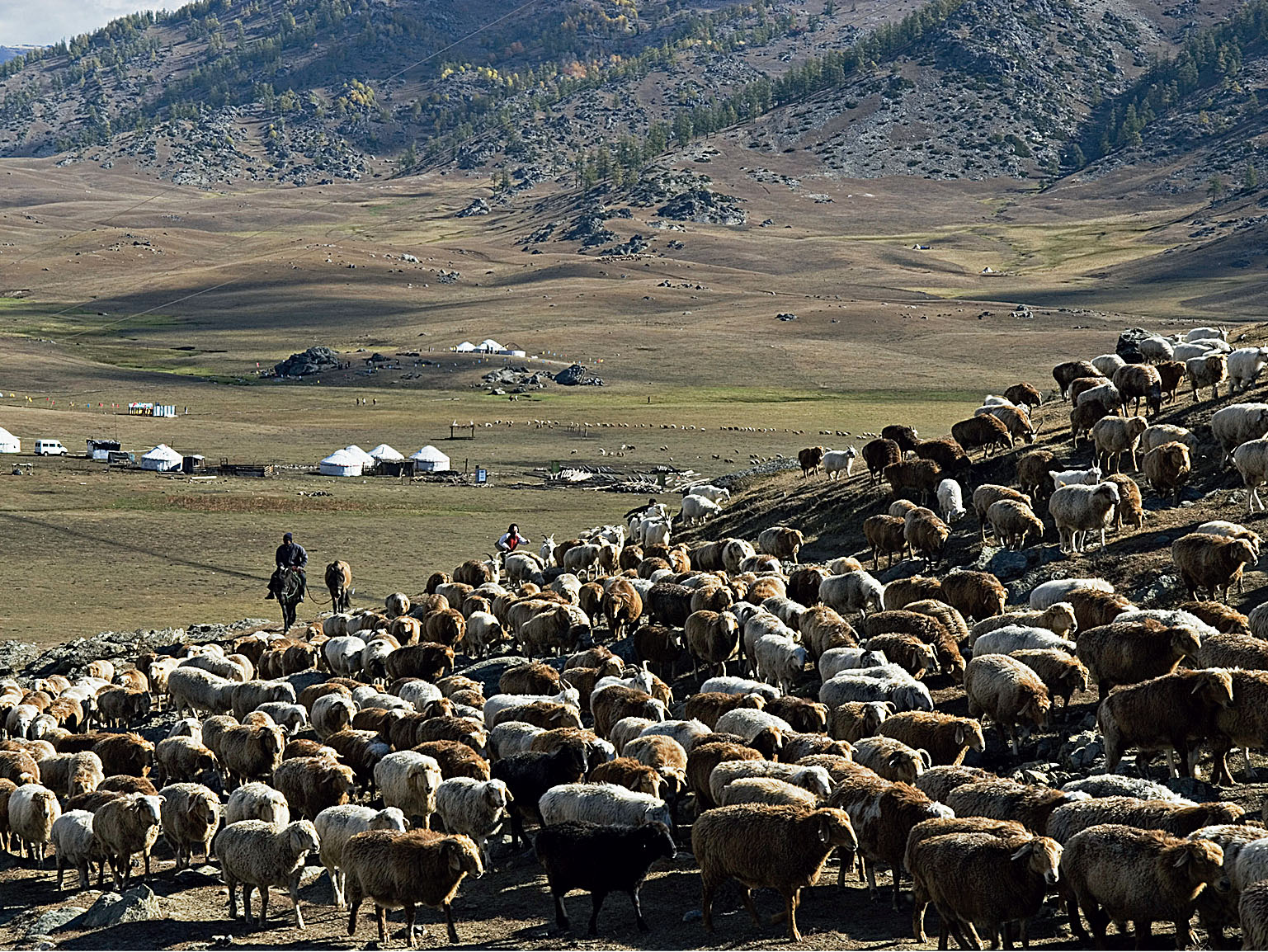Animal Domestication and the Rise of Pastoralism
At roughly the same time that they domesticated certain plants, people also domesticated animals. The earliest animal to be domesticated was the dog, which separated genetically as a subspecies from wolves at least 15,000 years ago and perhaps earlier. The mechanism of dog domestication is hotly debated: did it result only from human action, as foragers chose and bred animals that would help them with the hunt rather than attack them, or was it also caused by selective pressure resulting from wolf action, as animals less afraid of human contact came around campsites and then bred with one another? However it happened, the relationship benefited both: humans gained dogs’ better senses of smell and hearing and their body warmth, and dogs gained new food sources and safer surroundings. Not surprisingly, humans and domestic dogs migrated together, including across the land bridges to the Americas and on boats to Pacific islands.

Dogs fit easily into a foraging lifestyle, but humans also domesticated animals that led them to completely alter their way of life. In about 9000 B.C.E., at the same time they began to raise crops, people in the Fertile Crescent domesticated wild goats and sheep, probably using them first for meat, and then for milk, skins, and eventually fleece (see Map 1.2). They learned from observation and experimentation that traits are passed down from generation to generation, and they began to breed the goats and sheep selectively for qualities that they wanted, including larger size, greater strength, better coats, increased milk production, and more even temperaments. Sometimes they trained dogs to assist them in herding, and then selectively bred the dogs for qualities that were advantageous for this task. The book of Genesis in the Bible, written in the Fertile Crescent sometime in the first millennium B.C.E., provides an early example of selective breeding. Jacob makes a deal with his father-
Sometime after goats and sheep, pigs were domesticated in both the Fertile Crescent and China, as were chickens in southern Asia. Like domesticated crops, domesticated animals eventually far outnumbered their wild counterparts. For example, in the United States today (excluding Alaska), there are about 77 million dogs, compared to about 6,000 wolves. (Including Alaska would add about 150,000 dogs and 10,000 wolves.) There are more than 1.5 billion cattle, with enormous consequences for the environment. Animal domestication also shaped human evolution; groups that relied on animal milk and milk products for a significant part of their diet tended to develop the ability to digest milk as adults, while those that did not remained lactose intolerant as adults, the normal condition for mammals.
Sheep and goats allow themselves to be herded, and people developed a new form of living, pastoralism, based on herding and raising livestock. In areas with sufficient rainfall and fertile soil, pastoralism can be relatively sedentary and thus is easily combined with horticulture; people built pens for animals, or in colder climates constructed special buildings or took them into their houses. They learned that animal manure increases crop yields, so they gathered the manure from enclosures and used it as fertilizer.
Increased contact with animals and their feces also increased human contact with various sorts of disease-
In drier areas, flocks need to travel long distances from season to season to obtain enough food, so some pastoralists became nomadic. Nomadic pastoralists often gather wild plant foods as well, but they tend to rely primarily on their flocks of animals for food. Pastoralism was well suited to areas where the terrain or climate made crop planting difficult, such as mountains, deserts, dry grasslands, and tundras. Eventually other grazing animals, including cattle, camels, horses, yak, and reindeer, also became the basis of pastoral economies in Central and West Asia, many parts of Africa, and far northern Europe.